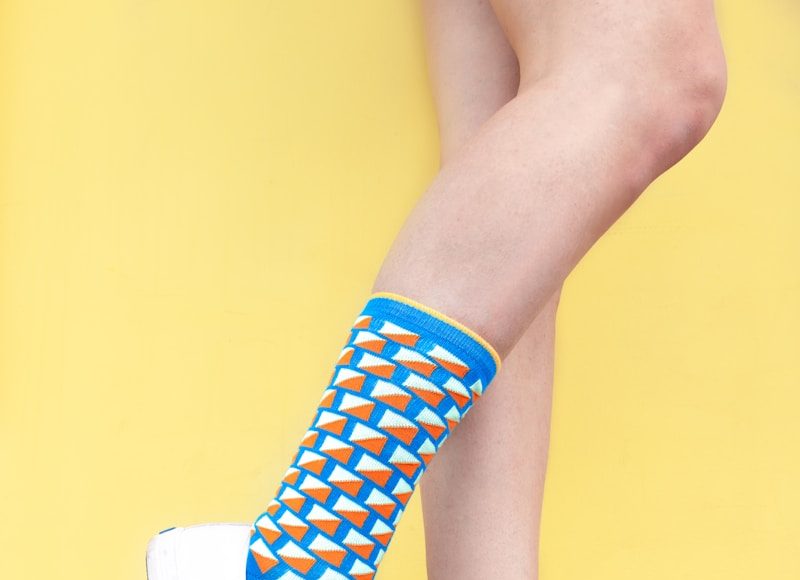For decades, the idea of orthopedic shoes conjured images of clunky soles, dull hues, and the aesthetic appeal of a hospital hallway. They were the footwear equivalent of a beige cardigan—practical but uninspired. Yet somewhere between Gen Z’s obsession with irony and millennials’ growing concern for comfort, a fascinating trend has taken root: orthopedic chic. No longer relegated to medical necessity, podiatrist-approved footwear is now strutting down city sidewalks and infiltrating fashion blogs with unapologetic coolness. This essay explores the unlikely marriage of comfort and style, diving into why orthopedic shoes have emerged as one of the defining trends in contemporary fashion.
From Clinical to Cultural: The Transformation of Comfort
Footwear has always been a deeply personal style choice—an extension of one’s identity and social expression. But it’s also a matter of health. The average person takes around 5,000 to 10,000 steps a day. That’s a lot of time spent on your feet, and yet, for the longest time, we’ve sacrificed comfort for visual appeal. Pointed stilettos, flat sandals with zero arch support, and trendy sneakers lacking structure have all dominated runways and Instagram feeds while quietly contributing to bunions, plantar fasciitis, and long-term joint pain.
Enter orthopedic chic: a category of footwear that blends the principles of podiatry with modern fashion aesthetics. What used to be the domain of health clinics and elderly shoppers is now stocked in boutique displays and worn by celebrities who value wellness as much as wardrobe. Brands that were once niche or medicinal, like Birkenstock, Hoka, and Dr. Scholl’s, have undergone major image makeovers and gained fresh relevance.
The Wellness Revolution and Fashion’s Shift
This shift didn’t happen in a vacuum. The cultural obsession with wellness and self-care over the past decade has deeply influenced fashion. Yoga pants evolved into athleisure. Skincare routines turned into ten-step rituals. And suddenly, people started asking whether their favorite fashion items were supporting or sabotaging their bodies. Orthopedic footwear found its moment in this environment, when looking good became synonymous with feeling good.
Influencers and fashion editors began reinterpreting what was once functional footwear. A pair of white orthopedic sneakers paired with an oversized blazer and gold jewelry? That’s not just practical—it’s editorial. Comfort became aspirational. Wearing something that says “I take care of my feet” began to reflect the kind of intentional lifestyle that modern consumers admire.
Design Meets Diagnosis: What Makes Footwear Podiatrist-Approved?
Not all comfortable shoes qualify as orthopedic, and not all orthopedic shoes are created equal. Podiatrist-approved footwear generally adheres to specific criteria. Key features include arch support to align the foot properly, cushioned soles to absorb shock, wide toe boxes to prevent crowding, and stability features that promote natural gait. Some brands even collaborate with medical professionals to ensure their products meet the highest standards of foot health.
What’s remarkable about today’s orthopedic chic is how seamlessly these elements are now integrated into stylish silhouettes. Hoka’s maximalist running shoes, once a niche product for ultramarathoners, have gained streetwear status thanks to their bold profiles and cushioned comfort. Similarly, Birkenstock’s cork footbeds, originally designed with orthopedic function in mind, are now framed in glossy leathers, vibrant colors, and luxury designer collaborations.
Fashion houses have taken notice. Designers like Rick Owens, Valentino, and Proenza Schouler have all partnered with orthopedic-forward brands or released their own takes on supportive footwear. These aren’t just cosmetic tweaks; they represent a cultural embrace of comfort as luxury.
A Foot in Every Camp: How Orthopedic Chic Bridges Generations
One of the most fascinating aspects of this trend is its cross-generational appeal. While younger consumers embrace orthopedic footwear for its style and symbolism of self-care, older adults are pleased to see shoes that serve their needs finally treated with aesthetic seriousness. Grandmother and granddaughter might both own a pair of the same chunky Tevas—and wear them for entirely different reasons. This generational bridging is rare in fashion and speaks to the universal appeal of products that honor the body as much as the eye.
For some, this represents a reclaiming of bodily agency. In cultures that have long demanded women suffer for style—think high heels, tight shoes, and narrow toe boxes—the rise of orthopedic chic is a radical shift. It prioritizes health and longevity over short-term flair, without requiring a sacrifice of expression.
Walking into the Future: The Market’s Response
As with any significant fashion movement, the commercial sector has responded in kind. Retailers are increasingly stocking supportive shoes not just in the “comfort” section but in main displays, right next to trendier counterparts. New brands are entering the market with startup energy and eco-conscious promises, offering footwear that’s ergonomic, ethically made, and easy on the eyes.
Digital platforms have further amplified the trend. Online communities like Reddit’s “malefashionadvice” or TikTok’s fashion creators often post hauls and styling tips that center around supportive shoes. On Instagram, influencers unbox Hoka One Ones like they’re rare sneakers. Even high-fashion publications now include orthopedic shoes in their seasonal trend forecasts.
Consumer behavior has changed, too. Buyers are more informed and more discerning. They read reviews not just for style but for arch support. They seek duality—shoes that they can wear to brunch and on long walks alike. The binary between fashion and function has been cracked, if not shattered.
The Future Is Podiatrist-Approved
Looking ahead, it’s likely that the orthopedic chic trend will only deepen. As awareness grows around musculoskeletal health, and as fashion continues to embrace wellness culture, more designers will be tasked with merging aesthetics with anatomy. We may see 3D-printed custom arch support as a standard offering. Materials like algae-based foams or recycled cork may replace synthetics, pushing sustainability alongside comfort. The idea of bespoke foot health won’t be confined to the medical elite—it will be democratized and democratized beautifully.
There will always be space for form-over-function moments—sky-high heels on red carpets, minimalistic slippers in editorial spreads—but the everyday wardrobe is changing. It’s growing wiser, more grounded, and ironically, more stylish.














